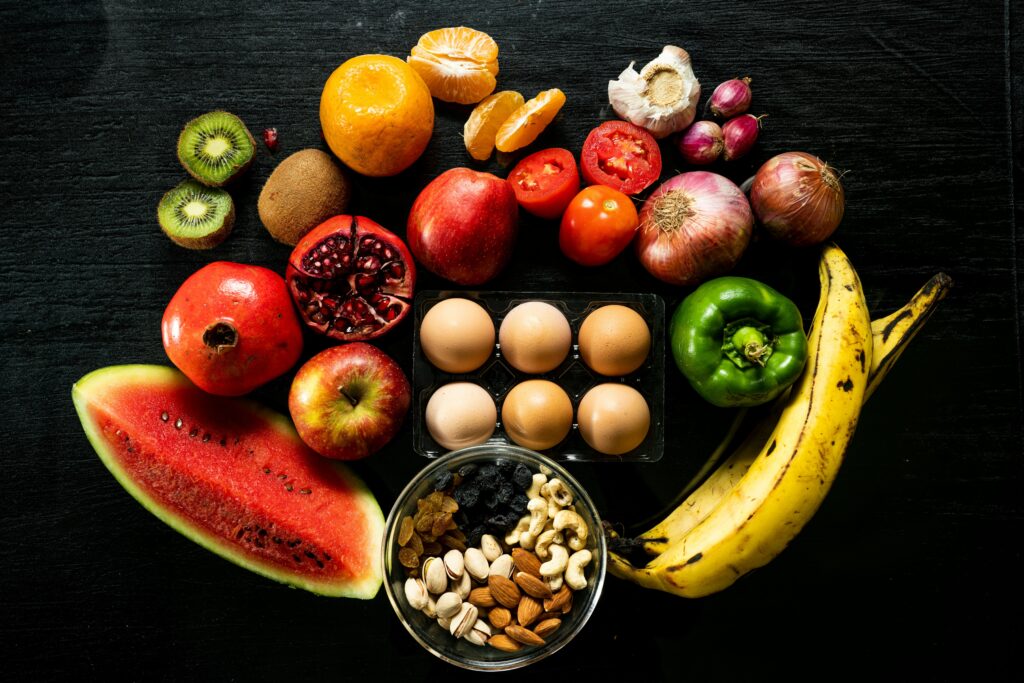Now Reading: Nutrition and Addiction Recovery: Fueling Healing and Wellness
-
01
Nutrition and Addiction Recovery: Fueling Healing and Wellness
Nutrition and Addiction Recovery: Fueling Healing and Wellness

Recovery is more than just stopping substance use. It’s about healing the whole person—physically, emotionally, and mentally. One of the most overlooked but vital aspects of healing is nutrition. In this article, we explore the role of nutrition and addiction recovery, how a healthy diet supports healing, reduces cravings, and promotes long-term wellness.
Why Nutrition Matters in Recovery
Substance abuse takes a heavy toll on the body. Alcohol, opioids, stimulants, and other drugs can deplete vital nutrients, damage organs, and disrupt the body’s ability to absorb what it needs.
According to the Substance Abuse and Mental Health Services Administration (SAMHSA), poor nutrition can worsen mood swings, fatigue, and stress—factors that can lead to relapse.
Eating balanced meals restores the body’s strength and improves brain function, giving individuals in recovery the foundation they need to succeed.
1. Substances Deplete Nutrients
Different drugs impact the body in different ways:
- Alcohol can damage the liver and reduce B vitamin absorption.
- Stimulants like cocaine and meth can suppress appetite and lead to malnutrition.
- Opioids slow digestion and may cause gut imbalances.
2. Nutrition Repairs the Body
A well-balanced diet helps repair damage by:
- Rebuilding muscle and tissue
- Supporting liver detoxification
- Restoring hormone balance
- Strengthening immunity
How Nutrition Supports Emotional Balance
Mood swings, anxiety, and depression are common during recovery. Food plays a big role in emotional stability.
1. Stabilizing Blood Sugar
Unstable blood sugar can cause irritability and cravings. Eating balanced meals with protein, fiber, and healthy fats keeps energy and mood steady.
2. Boosting Neurotransmitters
The brain needs nutrients like amino acids, B vitamins, magnesium, and omega-3 fatty acids to produce dopamine, serotonin, and other mood-regulating chemicals.
Stat: A 2015 study in the Journal of Psychoactive Drugs found that individuals who received nutritional support during addiction treatment reported better mood and lower relapse rates.
Essential Nutrients for Recovery
A recovery-friendly diet includes a variety of whole, unprocessed foods. Here are key nutrients to focus on:
1. Protein
Protein helps rebuild tissues and supports brain chemistry. Sources: Eggs, chicken, beans, tofu, fish
2. Complex Carbohydrates
They provide steady energy and support serotonin production. Sources: Brown rice, oats, sweet potatoes, whole grains
3. Healthy Fats
Fats nourish the brain and reduce inflammation. Sources: Avocados, nuts, seeds, olive oil, fatty fish
4. Vitamins and Minerals
B vitamins, magnesium, zinc, and vitamin D are especially important. Sources: Leafy greens, nuts, seeds, dairy, fortified cereals, sunlight

5. Probiotics and Fiber
A healthy gut supports immune health and emotional balance. Sources: Yogurt, kefir, sauerkraut, whole fruits, and vegetables
How Good Nutrition Reduces Cravings
Cravings are one of the biggest challenges in early recovery. Nutrient deficiencies can make them worse.
1. Balanced Meals Reduce Sugar Cravings
Many in recovery crave sugar, which stimulates dopamine. Balanced meals reduce sugar spikes and prevent the rollercoaster effect.
2. Proper Nutrition Fills the Gaps
When the body gets what it needs, cravings for harmful substances often decrease.
Tip: Don’t skip meals. Eating every 3–4 hours helps keep cravings in check.
Sample Meal Plan for Recovery
Here’s a simple example of a day focused on nutrition and addiction recovery:
Breakfast
- Scrambled eggs with spinach
- Whole grain toast
- Fresh fruit
Snack
- Greek yogurt with almonds
Lunch
- Grilled chicken with quinoa and steamed broccoli
- Side salad with olive oil
Snack
- Apple slices with peanut butter
Dinner
- Baked salmon with brown rice and roasted vegetables
- Chamomile tea
Practical Tips to Improve Nutrition in Recovery
You don’t need to overhaul your diet overnight. Small, consistent changes can make a big difference.
- Drink more water. Stay hydrated to support detox.
- Cook at home. Prepare simple meals to avoid processed foods.
- Add variety. Try new fruits, veggies, and whole grains.
- Limit caffeine and sugar. These can increase anxiety and cravings.
- Plan meals ahead. This helps avoid impulsive eating.
Stat: A 2020 survey by the National Institute on Drug Abuse (NIDA) showed that individuals who improved their diet during recovery experienced better sleep, energy, and mood.
The Role of Nutritionists in Recovery Programs
Many rehab centers now include registered dietitians or nutritionists as part of the care team. They assess nutrient deficiencies and create personalized plans.
Nutritionists can:
- Address specific dietary needs
- Help manage digestive issues
- Recommend supplements if needed
- Educate on food labels and portion sizes
Final Thoughts
Nutrition and addiction recovery go hand in hand. A nourishing diet supports the body, stabilizes emotions, and reduces the risk of relapse. While therapy and support groups remain essential, what we put on our plate matters too.
Eating well doesn’t have to be complicated. Focus on whole foods, balanced meals, and staying hydrated. Over time, these habits rebuild strength and help individuals thrive in recovery.
Recovery is not just about avoiding harmful substances. It’s about feeding your life with what heals, sustains, and empowers.
Sources:
- Substance Abuse and Mental Health Services Administration (SAMHSA). The Role of Nutrition in Recovery.
- Journal of Psychoactive Drugs (2015). Nutritional Support and Mood Improvement in Addiction Treatment.
- National Institute on Drug Abuse (2020). Behavioral Health and Nutrition Survey in Recovery Populations.

Jen Sheldon is a seasoned writer with a passion for fitness, health, wellness, and addiction treatment. With years of experience crafting insightful and research-backed content, she helps readers navigate their journey toward better well-being. When she’s not writing, you’ll find her exploring new workout routines or diving into the latest health trends.


























